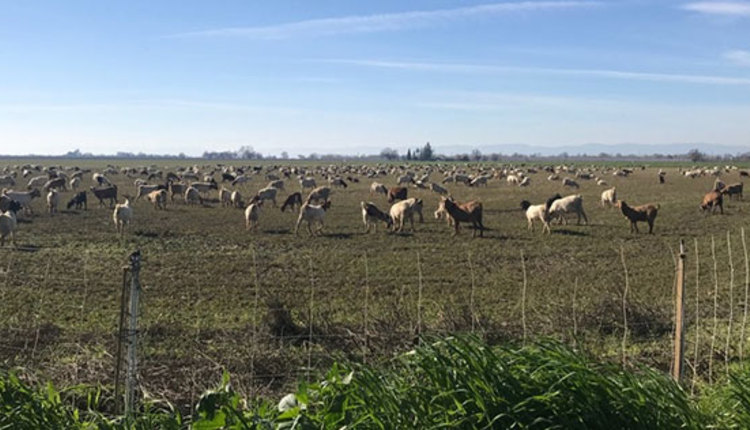
Although typing the phrase “goating off alfalfa” may induce your spell checker to rumble and begin smoking, the practice is an effective winter strategy. It helps reduce weed pressure, control alfalfa weevils, and remove thatch, according to Rachael Freeman Long, a University of California-Davis (UC) farm advisor based in Woodland.
A more common practice is “sheeping off” alfalfa in regions where alfalfa growth is slow but steady during the winter months. Using goats is equally effective, Long notes in a recent UC Alfalfa & Forage News blog.
The farm advisor says there are some differences between sheep and goats in terms of their grazing habits. “Goats are natural browsers and will often eat twigs, vines, leaves, and shrubs, but they often prefer the tops of plants,” Long says. “Sheep graze closer to the ground, eating short, tender broadleaf plants, grasses, and clover.”
Both sheep and goats can graze too closely if they are left in the field too long, Long warns. “This can cause damage to alfalfa crowns and buds. It can also contribute to soil compaction, especially if conditions are wet,” she adds.
Long says that there are multiple benefits to grazing off alfalfa in a Mediterranean-like climate. In addition to removing the winter growth that is subject to foliar diseases, such a practice also removes any emerged weeds.
The removal of the alfalfa canopy eliminates cover for rodents such as voles and gophers, making them easier prey for flying predators.
Long also notes that the removal of alfalfa stems in the winter period is an important control measure for alfalfa weevils. Alfalfa weevils typically lay eggs in mature alfalfa stems in December through March. By removing the stems, weevil pressure is reduced during the first spring growth of alfalfa.
Finally, Long cautions that many winter alfalfa fields can be very high quality and that bloat to the grazing sheep or goats is a risk that deserves close attention.

